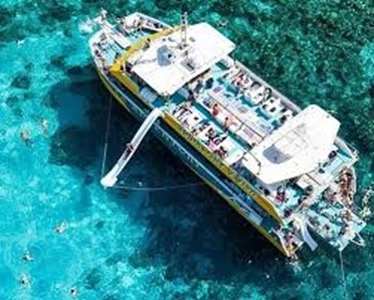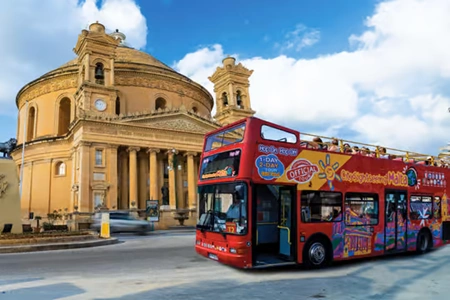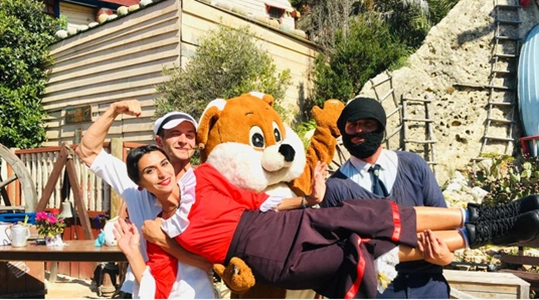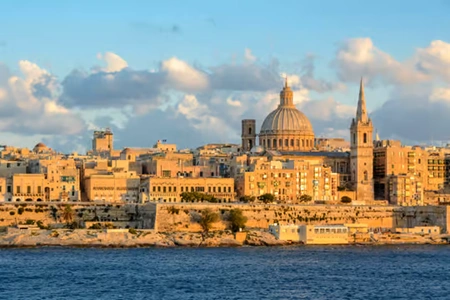Marsa
The area is known as il-Marsa which in Arabic means: place for mooring of ships / harbour / safe harbour. For example, Marsaxlokk, Marsalforn, Marsamxett and Marsascala, are all places with a harbour and contain the word Marsa. The two valleys Wied il-Kbir and Wied is-Sewda as well as the land behind it are below sea level.
App info: In our app you will find the location, address, opening hours and admission / entrance fee of this spot. If you use the app, you will find additional information and news about this spot on this page.
Since the Megalithic period, this land has been used for cultivating and growing crops and for fishing. There were also many natural hiding places in the creek, which provided some protection. Megalithic, Punic and Roman remains have been found during excavations.
Before the Megalithic period, the creek extended as shallow water to Ħal Qormi.
Inhabitation of this area goes way back in time, the first creek was used by the Phoenicians. During excavations, remains of the Roman constructions were found and it is clear that port activities were involved.
From the Middle Ages il-Marsa belonged to the parish of St. George in Citta Pinto (Ħal Qormi).
During the Great Siege of Malta of 1565, the Ottomans chose this area to set up their camps.
In the 17th century, Giovanni Francesco Abela turned his house into a museum with many artefacts. Now these artefacts are preserved and exhibited in the National Museum of Archaeology in Valletta.
During the French blockade, Maltese insurgents made a battery on Jesuit Hill, to surround the French. The battery was demolished after the blockade in 1800.
During the British period, a second creek was created in 1860 for Albert Town (named after Prince Albert).
Around 1890 the population was 600 people and there were 200 houses.
Financing the church by the rich and childless couple Lorenzo Balbi and his wife Carmela née Ozzini from Valletta made the construction of Trinity Church or Church of the Holy Trinity possible. Based on a design by Giovanni Domenico Debono with the Architect, Michele Mifsud, the foundation stone was laid in October 1909. In April 1913 the church was opened and was entrusted to Capuchin Friars.
The church was blessed by the general vicar of the diocese of Malta, Monsignor Luigi Attard in 1913 and became the parish church.
The current population is around 5,500 but the population is declining.
Marsa used to be the location of Malta's coal-fired power station, which later switched to oil and is now located in Marsaxlokk.
Address and street / location can be found on our map, click on Guide in the menu bar and you will get a map with markers. | |
Book: Buy tickets for place of interest. sights, hop on hop off buses, exhibitions, safari, etc or book and tour. | |
Additional information
Marsa is not a very large village, but nonetheless has a large hinterland, mainly connected to sports and industry.
The Marsa Sports Grounds offers a wide variety of sports. Since it was established during the British period in Malta, most sports have still a very Britsh character. Within the grounds the Royal Malta Golf Club has an 18 hole golf course. This private members' club is always willing to welcome visitors. Besides golf, the club offers among others tennis, polo, cricket and archery. The National Athletic Stadium offers athletics, rugby, baseball, netball, basketball and football. The modern horse-racing course is the equestrian centre of the island. In its vicinity one can find horse-riding schools, stables and specialised commercial outlets.
The word ‘Marsa’ is from semitic origin and means harbour or port. There are in Malta and other parts of the Mediterranean Sea a number of places which contain the word ‘marsa’. In Malta we have Marsamxett, Marsaxlokk, Marsascala, and Marsalforn.





